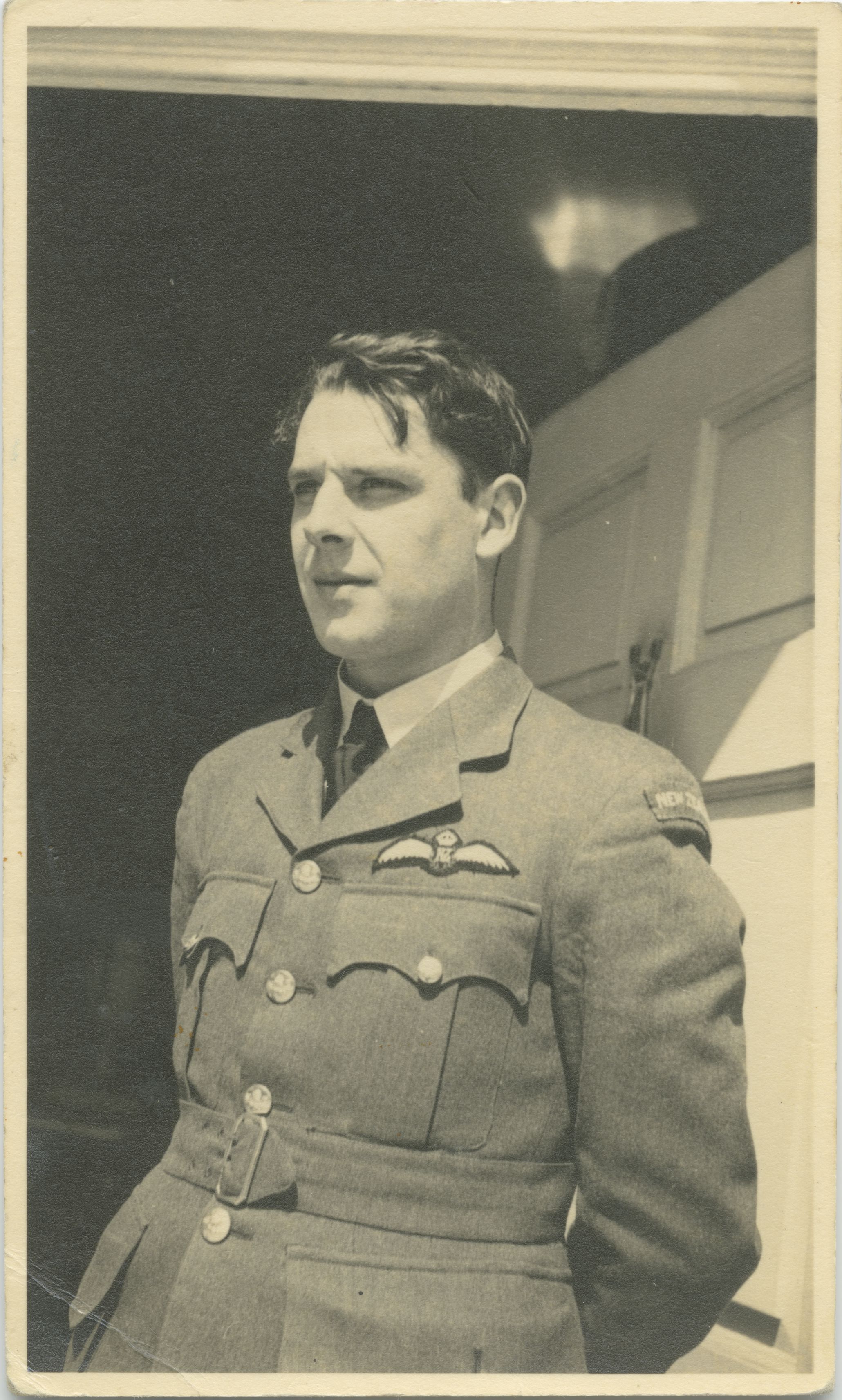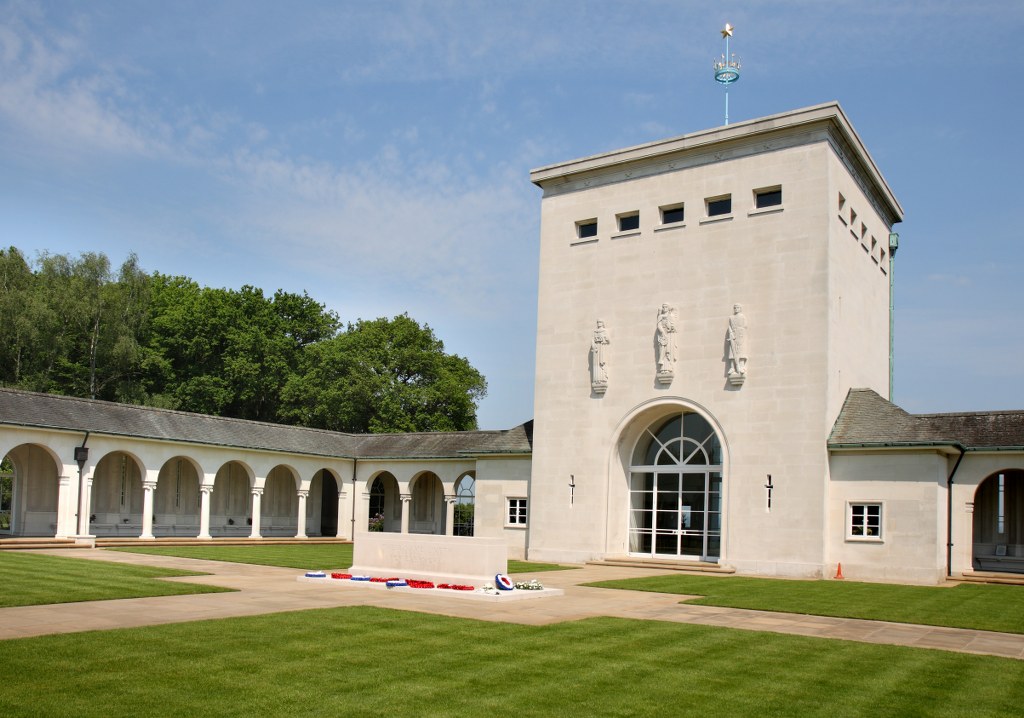







James Gilbert Duffill was born in Hāwera on 10 October 1919, the son of architect John Alfred Duffill and his wife Joyce Duffill (nee Wilson). Known as Jim, he also had a brother named John who died as a child and three sisters, Mary, Alison and Margaret.
Jim attended Hawera Technical College, where he played rugby, tennis and cricket, then went on to study engineering at Canterbury University from 1939 to 1940.
After the Second World War broke out, Jim served in the Territorials before applying to train as a pilot with the Royal New Zealand Airforce in December 1940. He was enlisted at the Ground Training School in Levin in August 1941 then posted to No.2 Elementary Flying Training School in New Plymouth the following month. On 8 November 1941 he proceeded to the No.2 Service Flying Training School in Woodburne near Blenheim where he was awarded his flying badge. He was then commissioned in the rank of Pilot Officer on 31 January 1942.
Jim left for England on the ship Akaroa on 21 February 1942, arriving in April. He was posted to the No.3 Personnel Reception Centre in Bournemouth and later the No.7 Personnel Reception Centre in Harrogate. In May he proceeded to the No.15 Advanced Flying Unit in Leconfield, Yorkshire where he stayed until the end of June then on to the No.10 Operational Training Unit at Abingdon in Berkshire where he trained on Armstrong Whitworth Whitley aircraft.
During September 1942 Jim was engaged in anti-submarine patrols off Cornwall, until his aircraft was shot down by a German Junkers JU88. He escaped injury and was promoted to Flying Officer the following month. On 9 October he was posted to No.101 Squadron at Holme in Yorkshire then to the No.1654 Conversion Unit at Wigsley in Nottinghamshire where he flew Avro Manchester and later Lancaster aircraft. He rejoined No.101 Squadron in December and began carrying out operational sorties.
On 17 January 1943 Jim was pilot and captain of a Lancaster which failed to return to base following a nighttime raid on Berlin. No signals were received from the aircraft after takeoff and the crew were reported missing but his family did not give up hope and a letter from his Wing Commander Eric Eaton, written two days after Jim’s plane went down, seemed to indicate that he could have parachuted to safety or had to make a forced landing in enemy territory, in which case “good news” of his survival “would take a considerable time to come through”. But when no further information could be gained through the International Red Cross Committee, Jim was finally presumed to have died on the night of 17/18 January and his death was officially registered. Wing Commander Eaton was himself killed flying on a mission over Germany in a Lancaster the following year.
Jim wrote regularly to his family while he was overseas and after his death several unopened letters, posted before they knew he would not be coming home, were returned to them in Hāwera. Jim’s grieving father burnt them all. The young pilot left no will, only some shares in the Hawera Theatre Company, a small government life insurance policy and the remains of his Air Force pay. Eaton described him as “a great loss to the Squadron… popular with his brother Officers” and “a very competent and efficient pilot” who carried out his duties “with a splendid courage and devotion”.
James Duffill’s name is recorded on the Runnymede Memorial in Surrey and in the Taranaki Cathedral of St Mary in New Plymouth.
Auckland Museum Online Cenotaph
LinkPlease do not reproduce these images without permission from Puke Ariki.
Contact us for more information or you can order images online here.